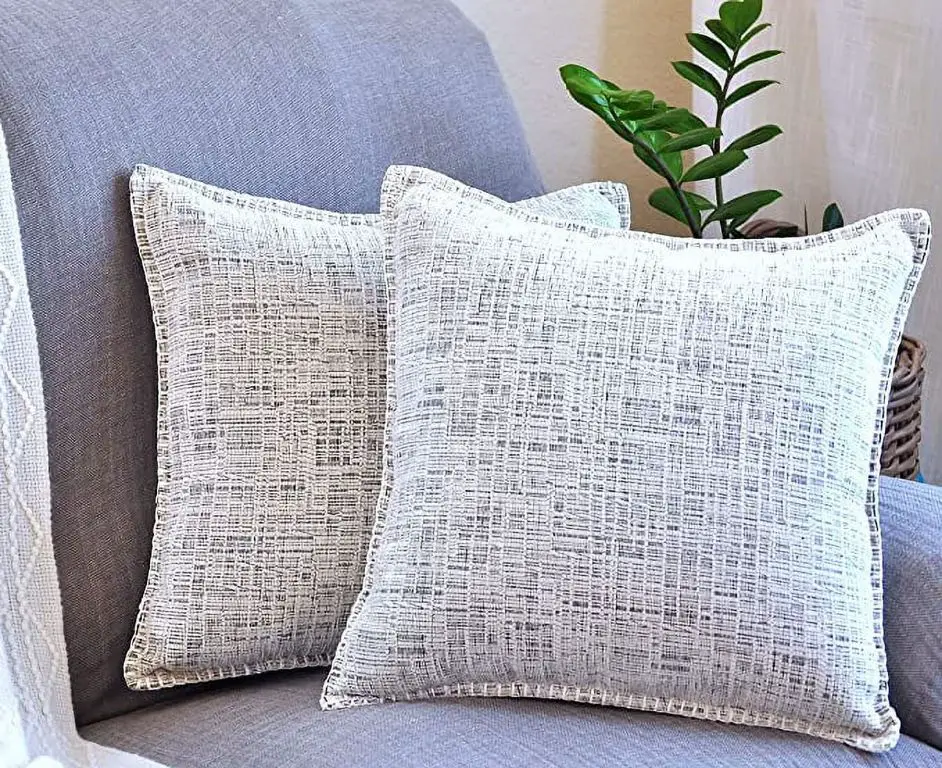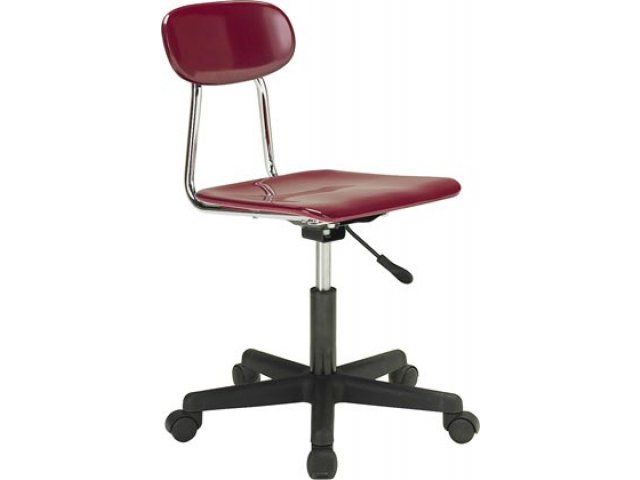What Size Pillow Goes In 18X18 Cover?
Standard Pillow Sizes
Pillows come in a variety of standard sizes to fit mattresses like twin, full, queen, and king. The most common pillow sizes are:
- Twin/Single – 20″ x 26″
- Full/Double – 20″ x 26″
- Queen – 20″ x 30″
- King – 20″ x 36″
- Super Standard/Crib – 28″ x 52″
Standard pillows around 20″ x 26″ are designed to fit twin and full-size mattresses that are usually 53″ wide. Queen and king pillows are longer to fit the wider queen (60″) and king (76″) mattresses.
According to this source, opting for two standard or queen pillows per person allows room to adjust pillow thickness and support.
Measuring Your Pillow
To find the right size pillow for an 18×18 pillow cover, you’ll first need to learn how to properly measure the dimensions of your pillow. This involves measuring both the length and width of the pillow.
According to Pillow Decor, you should measure pillows across the seams from corner to corner. Hold the pillow at the corners and pull the fabric cover tight. Then, use a cloth measuring tape to measure from corner to corner diagonally for both length and width.
The key is to gently pull the fabric tight so there are no ripples or wrinkles. You want to measure the actual pillow insert size, not the outer cover size. Measure across both diagonals and take the larger of the two measurements for both length and width.
Round your measurements up to the nearest whole inch. This will give you the standard pillow size that you need to match your pillow cover dimensions.
So for example, if you measure 17.5 inches diagonally for the length and 17.25 inches for the width, your standard pillow size would be 18×18 inches.
18×18 Pillow Covers
18×18 inch pillow covers are a popular square decorative pillow size. These covers are designed to fit 18×18 inch pillow inserts, but you’ll get the best fit with a slightly larger 20×20 inch insert.
As a general rule, your pillow insert should be about 2 inches wider on all sides than the finished size of your pillow cover for a full, plump look. So for an 18×18 inch pillow cover, choose a 20×20 inch pillow insert (cite: www.pillowinsertsizeguide.com)

The extra 2 inches on each side allows the pillow form to fill out the cover properly without looking flat or deflated in the middle. This helps create that luxurious, fluffy pillow look.
You can certainly use an 18×18 inch insert in an 18×18 inch cover if needed. But it may not fill out the pillow as fully, especially if you prefer a firmer feel. Going up 2 inches gives you that “stuffed” pillow look.
Square pillows like the 18×18 size create a clean, tailored appearance on sofas, chairs and beds. They’re versatile for mixing and matching with all types of home decor.
Finding the Right Fit
The key to choosing the right pillow insert size for your 18×18 pillow cover is getting one that fits properly. You generally want an insert that’s about 2 inches larger than the dimensions of your cover. This allows the insert to fill out the pillow cover so it looks full and plump rather than flat or saggy.
For an 18×18 inch pillow cover, an insert that’s approximately 20×20 inches will fit best. As Colin & Finn notes, going 2 inches larger creates a nice full shape. Arianna Belle also recommends going 2 inches larger for the best fit.
You don’t want to go too much bigger than 2 inches though. An insert that’s more than 4 inches larger can be too bulky and overstuff the cover. Stick with a 20×20 inch insert for an 18×18 pillow and you’ll get that perfect plump pillow look.
Thickness Considerations
The thickness or “loft” of your pillow is an important factor to ensure proper spine alignment and support for your neck and head. Pillows come in a range of thicknesses from low loft (3 inches or less) to high loft (over 5 inches).
For an 18×18 inch pillow cover, you’ll generally want a medium loft pillow between 3-5 inches thick. This provides enough lift to support your head and neck without craning your neck up or down unnaturally. As this source notes, medium loft pillows are ideal for most back and side sleepers.
If you sleep on your stomach, you may prefer a lower loft around 2-3 inches to avoid neck strain from a pillow that is too tall. Side sleepers often need extra loft so a 5 inch pillow may be optimal. Evaluate your current pillow height and sleeping position to determine the ideal thickness.
Look for pillow inserts that specifically list their loft height when shopping for an 18×18 pillow cover. Inserts are sold by loft rather than standard “one size fits all” so you can customize the thickness as needed. Aim for a loft between 3-5 inches for optimal comfort and support.
Fill Material
The type of filling or stuffing material inside a pillow greatly impacts its firmness, softness, and comfort. Some common fill materials for pillows include:
Down
Down refers to the soft, fluffy clusters and plumules that come from ducks and geese. Down pillows are known for providing soft yet supportive comfort. They mold to the contours of your head and neck and bounce back into shape (The Sleep Guru’s Guide to Pillow Fill Types). However, down pillows can be more expensive and may trigger allergies in some people.
Memory Foam
Memory foam molds to the shape of your head and neck while providing cushioning support. It retains your impression for a few seconds before bouncing back. Memory foam pillows relieve pressure points but can feel too firm and get hot for some sleepers (10 Different Types Of Pillow Stuffing Explained).
Polyester Fiberfill
Polyester fiberfill, also called poly-fil, is a synthetic down alternative made from polyester fibers. It’s hypoallergenic, affordable, and provides a blend of softness and support. However, polyester pillows tend to flatten more quickly compared to down or memory foam.
Firm vs Soft
When choosing between a firm vs soft pillow, the firmness really comes down to personal preference and sleeping position. Those who sleep on their stomach or back may prefer a firmer pillow that keeps the head level with the mattress without sinking in too deep. Side sleepers often opt for a softer pillow that cradles the head and neck. However, there are pros and cons to both firm and soft pillows to consider.
Firmer pillows provide more support for the head and neck by resisting compression. This can help keep the spine aligned and prevent neck pain. The firmness also allows for easier adjusting of pillow height as needed. However, some may find firmer pillows to be uncomfortably hard on pressure points.
Softer pillows contour to the head and neck shape, potentially reducing pressure points. The plush feel can seem more luxurious and comfortable to some. However, soft pillows provide less support and stability. The head can sink in too far, misaligning the spine and causing neck, shoulder or back discomfort for certain sleep positions.
Testing out different pillow firmness levels can help determine an ideal balance of comfort and support. Adjustable firmness pillows allow customization as preferences change. However, most sleep experts recommend a medium feel that is not too soft or firm. The right firmness comes down to individual needs and sleeping style.
Allergy Concerns
Individuals with allergies or asthma need to be mindful of the pillow fill material they choose. Certain materials like feather and down can trigger allergic reactions for some. The best hypoallergenic options include:
Cotton – All natural and hypoallergenic cotton is a firm, breathable choice. It maintains its shape well over time (Source).
Polyester – Synthetic polyester fibers are non-allergenic. They provide soft, resilient support. Look for certified asthma & allergy friendly polyester fills (Source).
Latex – Shredded latex foam is naturally hypoallergenic. It allows airflow to keep allergens away from your breathing space while sleeping (Source).
Always check the manufacturer’s information to confirm hypoallergenic claims when choosing a pillow insert. Proper, frequent washing of the pillow case is also essential for allergy sufferers.
Washable Inserts
When looking for pillow inserts that fit into 18×18 inch pillow covers, it’s often recommended to find ones that are machine washable. This makes care and maintenance much easier over time. Many standard pillow inserts need to be professionally dry cleaned, which can be inconvenient and costly. According to Pillowflex, plush machine washable cloth inserts with a high thread count cotton cover are a good option for washability.
There are several places to find high quality machine washable inserts online. For example, Amazon sells popular brands like Acanva, which are made of soft hypoallergenic polyester. The product details indicate that Acanva’s inserts can be washed in cold water and tumble dried on low. Other retailers like Pillowflex also sell similar machine washable pillow forms made in the USA. When browsing for 18×18 inserts, be sure to look for details about washing instructions and materials used.
Summary
When selecting a pillow to fit an 18×18 inch pillow cover, the key factors to consider are:
- Standard pillow sizes – Square pillows typically come in 18×18 or 20×20 inches. Knowing the common sizes can help narrow your search.
- Measuring your existing pillow – If you already have a pillow you like, measure its length and width to find the best fit.
- Thickness – Pillows come in different loft thicknesses. Make sure to pick one that fills the cover properly without being too thin or puffy.
- Fill material – Consider options like down, down alternative, memory foam or polyester fill based on your desired softness, support, and allergy needs.
- Firm vs soft – Decide if you prefer a soft, sinking pillow or a firmer supportive fill for back and neck alignment.
- Washable – Look for pillow inserts with covers that can be removed and machine washed regularly.
Keeping these key factors in mind will help you select the perfect pillow insert to complement your 18×18 inch pillow cover.






